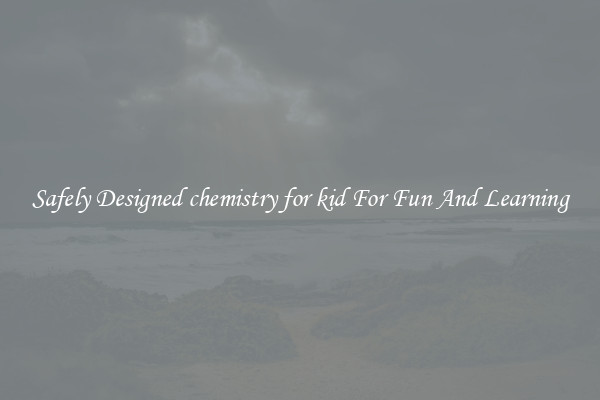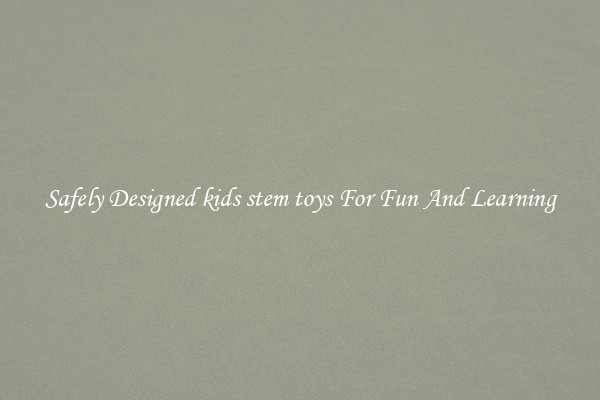Safely Designed chemistry for kid For Fun And Learning
Safely Designed Chemistry for Kids: Fun and Learning

Chemistry can be an exciting and engaging subject for children. Exploring the world of atoms, molecules, and reactions can spark their curiosity and help them better understand the world around them. However, it is crucial to ensure that any chemistry activities for kids are safely designed, keeping in mind their age and skill level.
Safety is the number one priority when it comes to conducting chemistry experiments with children. Parents and educators must take extra precautions to make sure the activities are safe and suitable for their age group. Here are a few guidelines to follow to ensure the safe design of chemistry experiments for kids.
1. Choose age-appropriate experiments: Younger children may not have the manual dexterity or cognitive abilities to handle certain chemicals or equipment. Select experiments that are specifically designed for their age group, with simple and safe materials. Start with basic activities like mixing household substances or creating simple reactions using baking soda and vinegar.
2. Use non-toxic and safe materials: Avoid using harsh chemicals that could pose a risk to the child's health. Opt for non-toxic alternatives whenever possible, such as food coloring, salt, sugar, or vegetable oil. There are many safe and easily accessible substances that can be used to create fascinating chemical reactions.
3. Supervise at all times: Children should never be left unsupervised while conducting chemistry experiments. An adult should always be present to guide, explain, and ensure the safety of the activity. Encourage children to ask questions and seek assistance whenever needed.
4. Provide proper protective equipment: Even with safe materials, it is essential to provide children with basic protective equipment like safety glasses, gloves, and aprons. This not only enhances their safety but also helps create a sense of responsibility and awareness.
5. Focus on simple concepts: Chemistry experiments for kids should prioritize learning fundamental concepts in an interactive and enjoyable way. Introduce basic concepts like mixing colors, understanding density, or exploring acids and bases. Engage children in hands-on activities to help them grasp these concepts better.
6. Practice safe handling and disposal: Teach children the importance of proper handling and disposal of chemical substances. Emphasize the need to wash hands after handling any materials and properly dispose of waste in accordance with environmental guidelines.
Safely designed chemistry for kids can be a fantastic way to spark their interest in science and promote hands-on learning. By following these safety guidelines and selecting age-appropriate experiments, parents and educators can create a safe and enjoyable environment for children to explore the wonders of chemistry.

View details

View details

View details

View details







